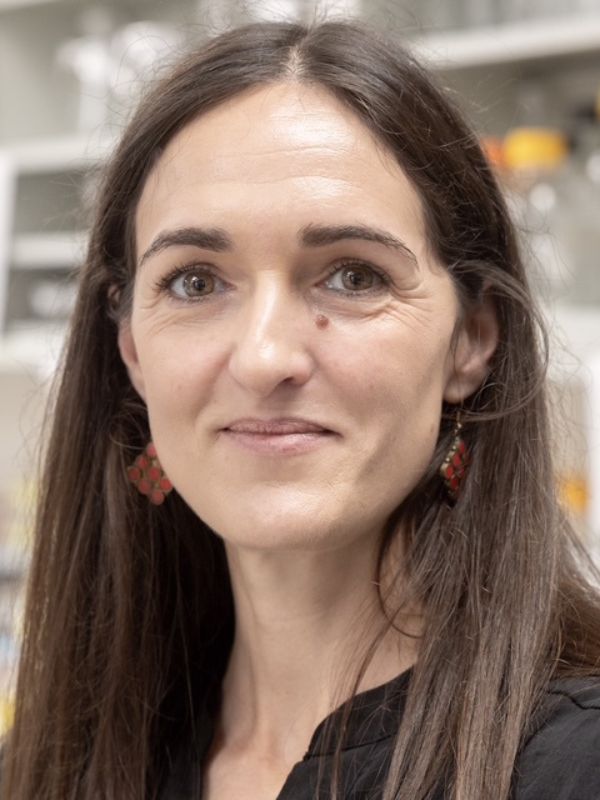Biography
Joined the Department in 2013
Associations:
Center for Biological Clocks Research
Faculty of Genetics
Texas A&M Institute for Neuroscience
Research Interests
Postdoc Position Available
Circadian clocks in the migration of the monarch butterfly: from genes to behavior
Our research broadly lies in understanding how organisms respond and adapt to changing environments, with an emphasis on circadian biology. Organisms from bacteria to humans use circadian clocks to control a plethora of biochemical, physiological and behavioral rhythms. These clocks are synchronized to daily and seasonal environmental changes to allow organisms to tune specific activities at the appropriate times of day or year.
In our laboratory, we use the eastern North American migratory monarch butterfly (Danaus plexippus) as a model system to study animal clock mechanisms and the role of circadian clocks and clock genes in a fascinating biological output, the animal long-distance migration. Every fall, like clockwork, millions of monarch butterflies start migrating thousands of miles from North America to reach their overwintering sites in central Mexico. During their journey south, migrating monarchs use a time-compensated sun compass orientation mechanism to maintain a constant flight bearing. Circadian clocks located in the antennae provide the critical internal timing device for compensation of the sun movement across the sky over the course of the day. The recent sequencing of the monarch genome and the establishment of genetic tools to knockout clock genes (and others) in vivo using nuclease-mediated gene targeting approaches provides us with a unique opportunity to uncover the molecular and cellular underpinnings of the butterfly clockwork, its migratory behavior and their interplay.
We are using integrative approaches that include molecular, genetic, genome-wide profiling approaches, and behavior to more specifically address: 1) how the circadian clock and clock genes govern the photoperiodic seasonal migratory switch and 2) the molecular and genetic bases underlying the migratory behavior. We also continue to develop innovative gene-targeting approaches (using TALENs) to knock-in reporter tags into clock genes loci to gain insights into the clock circuitry involved in both seasonal responses and navigation.
Laboratory Details
Laboratory Address:
Biological Sciences Building East
Room 102
979-845-3655
Educational Background
- B.S., 2002, Animal Biology, University Paris 6 Pierre and Marie Curie, France.
- M.S., 2003, Invertebrate Physiology, University Paris 6 Pierre and Marie Curie, France.
- Ph.D., 2006, Insect Physiology, University Paris 6 Pierre and Marie Curie, France.
- Postdoctoral research, Molecular Neuroethology, University of Massachusetts Medical School, USA.
Selected Publications
-
- Iiams, SE, Wan, G, Zhang, J, Lugena, AB, Zhang, Y, Hayden, AN et al.. Loss of functional cryptochrome 1 reduces robustness of 24-hour behavioral rhythms in monarch butterflies. iScience. 2024;27 (2):108980. doi: 10.1016/j.isci.2024.108980. PubMed PMID:38333697 PubMed Central PMC10850777.
- Merlin, C, Oberhauser, KS. Editorial overview: Spotlight on monarch butterflies: A treasure trove of biology to preserve. Curr Opin Insect Sci. 2024;61 :101152. doi: 10.1016/j.cois.2023.101152. PubMed PMID:38043701 .
- Anttonen, T, Burghi, T, Duvall, L, Fernandez, MP, Gutierrez, G, Kermen, F et al.. Neurobiology and Changing Ecosystems: Mechanisms Underlying Responses to Human-Generated Environmental Impacts. J Neurosci. 2023;43 (45):7530-7537. doi: 10.1523/JNEUROSCI.1431-23.2023. PubMed PMID:37940589 PubMed Central PMC10634574.
- Merlin, C. Biological timing: The crustacean Parhyale is rolling with the tides. Curr Biol. 2023;33 (10):R415-R417. doi: 10.1016/j.cub.2023.04.023. PubMed PMID:37220736 .
- Merlin, C. Insect magnetoreception: a Cry for mechanistic insights. J Comp Physiol A Neuroethol Sens Neural Behav Physiol. 2023;209 (5):785-792. doi: 10.1007/s00359-023-01636-8. PubMed PMID:37184693 .
- Nguyen, TAT, Beetz, MJ, Merlin, C, Pfeiffer, K, El Jundi, B. Weighting of Celestial and Terrestrial Cues in the Monarch Butterfly Central Complex. Front Neural Circuits. 2022;16 :862279. doi: 10.3389/fncir.2022.862279. PubMed PMID:35847485 PubMed Central PMC9285895.
- Shetty, V, Meyers, JI, Zhang, Y, Merlin, C, Slotman, MA. Impact of disabled circadian clock on yellow fever mosquito Aedes aegypti fitness and behaviors. Sci Rep. 2022;12 (1):6899. doi: 10.1038/s41598-022-10825-5. PubMed PMID:35478212 PubMed Central PMC9046260.
- Zhang, Y, Iiams, SE, Menet, JS, Hardin, PE, Merlin, C. TRITHORAX-dependent arginine methylation of HSP68 mediates circadian repression by PERIOD in the monarch butterfly. Proc Natl Acad Sci U S A. 2022;119 (4):. doi: 10.1073/pnas.2115711119. PubMed PMID:35064085 PubMed Central PMC8795551.
- Beetz, MJ, Kraus, C, Franzke, M, Dreyer, D, Strube-Bloss, MF, Rössler, W et al.. Flight-induced compass representation in the monarch butterfly heading network. Curr Biol. 2022;32 (2):338-349.e5. doi: 10.1016/j.cub.2021.11.009. PubMed PMID:34822766 .
- Rivas, GBS, Zhou, J, Merlin, C, Hardin, PE. CLOCKWORK ORANGE promotes CLOCK-CYCLE activation via the putative Drosophila ortholog of CLOCK INTERACTING PROTEIN CIRCADIAN. Curr Biol. 2021;31 (19):4207-4218.e4. doi: 10.1016/j.cub.2021.07.017. PubMed PMID:34331859 PubMed Central PMC8511158.
-

